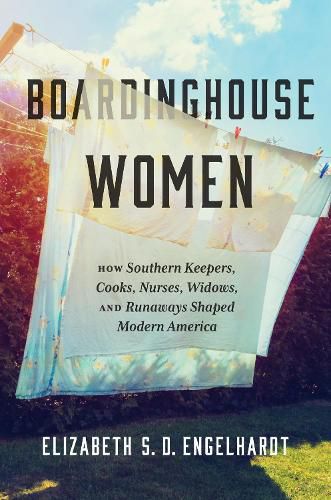Readings Newsletter
Become a Readings Member to make your shopping experience even easier.
Sign in or sign up for free!
You’re not far away from qualifying for FREE standard shipping within Australia
You’ve qualified for FREE standard shipping within Australia
The cart is loading…






In this innovative and insightful book, Elizabeth Engelhardt argues that modern American food, business, caretaking, politics, sex, travel, writing, and restaurants all owe a debt to boardinghouse women in the South. From the eighteenth century well into the twentieth, entrepreneurial women ran boardinghouses throughout the South; some also carried the institution to far-flung places like California, New York, and London. Owned and operated by Black, Jewish, Native American, and white women, rich and poor, immigrant and native-born, these lodgings were often hubs of business innovation and engines of financial independence for their owners. Within their walls, boardinghouse residents and owners developed the region's earliest printed cookbooks, created space for making music and writing literary works, formed ad hoc communities of support, tested boundaries of race and sexuality, and more.
Engelhardt draws on a vast archive to recover boardinghouse women's stories, revealing what happened in the kitchens, bedrooms, hallways, back stairs, and front porches as well as behind closed doors-legacies still with us today.
$9.00 standard shipping within Australia
FREE standard shipping within Australia for orders over $100.00
Express & International shipping calculated at checkout
In this innovative and insightful book, Elizabeth Engelhardt argues that modern American food, business, caretaking, politics, sex, travel, writing, and restaurants all owe a debt to boardinghouse women in the South. From the eighteenth century well into the twentieth, entrepreneurial women ran boardinghouses throughout the South; some also carried the institution to far-flung places like California, New York, and London. Owned and operated by Black, Jewish, Native American, and white women, rich and poor, immigrant and native-born, these lodgings were often hubs of business innovation and engines of financial independence for their owners. Within their walls, boardinghouse residents and owners developed the region's earliest printed cookbooks, created space for making music and writing literary works, formed ad hoc communities of support, tested boundaries of race and sexuality, and more.
Engelhardt draws on a vast archive to recover boardinghouse women's stories, revealing what happened in the kitchens, bedrooms, hallways, back stairs, and front porches as well as behind closed doors-legacies still with us today.